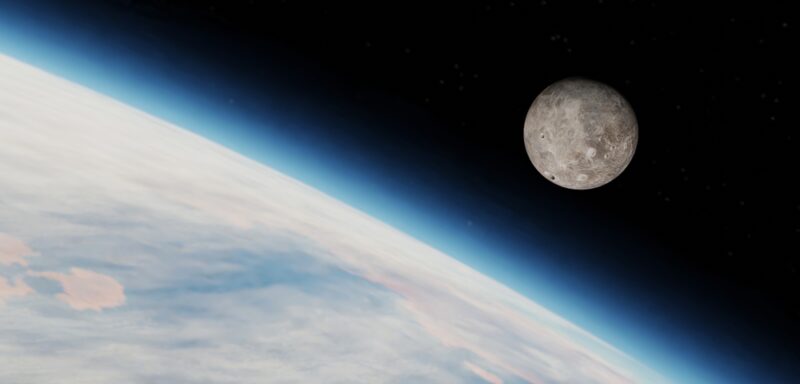On Sept. 29, the Earth will temporarily get a second moon. A small asteroid will be pulled into orbit before being released from our planet’s gravitational pull.
NASA’s Asteroid Terrestrial-Impact Last Alert System (ATLAS) spotted the little asteroid on Aug. 7. At just 10m wide, the asteroid pales in compared to our moon, which is 3,474km in diameter. Because of its tiny size, we cannot see it with the naked eye or a regular telescope.
A visitor from the Arjuna belt
Christened 2024 PT5, the space rock comes from the Arjuna asteroid belt. From its trajectory, astronomers figured out when it would enter and leave our gravitational field.
“The object that is going to pay us a visit belongs to the Arjuna asteroid belt, a secondary asteroid belt made of space rocks that follow orbits very similar to that of Earth at an average distance to the sun of about 150 million kilometers,” Carlos de la Funta, lead author of the new study said.
The asteroid’s trajectory is bringing it close to Earth, within 4.5 million kilometers. For an asteroid, it is moving pretty slowly, at 3,450kmph. This slow speed means Earth’s gravitational field will pull it temporarily into orbit.
“Under these conditions, the geocentric energy of the object may grow negative, and the object may become a temporary moon of Earth…starting next week and for about two months,” Funta explained.
A brief visit
The asteroid is “not going to complete a full revolution of our planet, it’s just going to have its orbit altered, just twisted slightly by our planet, and then it’ll continue on its merry way,” astronomer Jennifer Millard, who was not involved in the new study, told the BBC. Then, gravitational disturbances from the sun will trigger the asteroid to catapult from its journey around Earth, flinging it back into the Arjuna asteroid belt.
This is not the first time we have had a mini-moon circling Earth. Astronomers have spotted a few, and researchers believe that many others have gone unnoticed.






